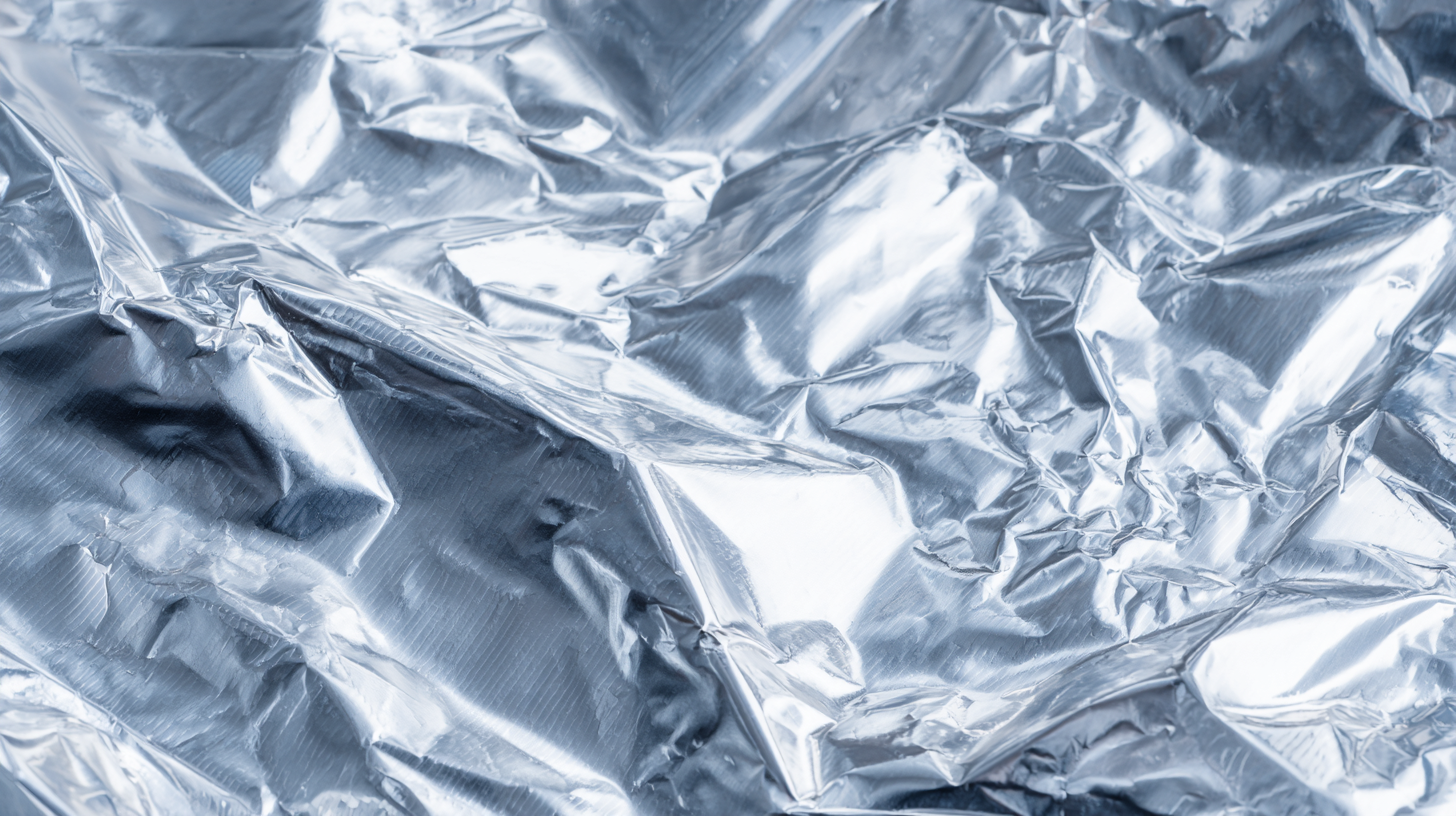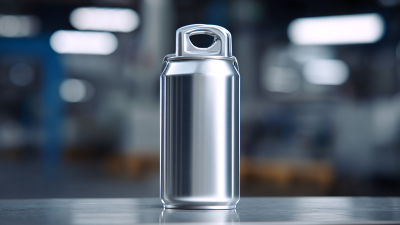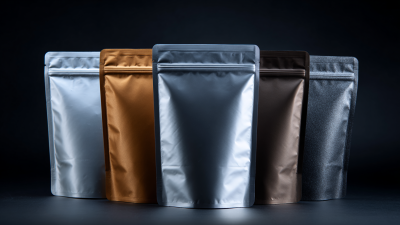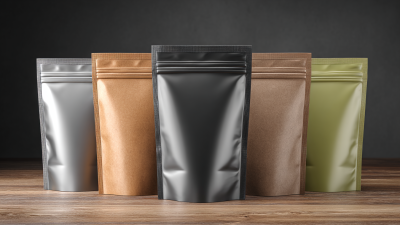Understanding the Benefits of Using Aluminum Foil for Food Preservation and Packaging
 Aluminum foil for food packaging has emerged as a vital component in the food preservation industry, offering numerous advantages that extend the shelf life and quality of various food products. According to the Aluminum Association, the global consumption of aluminum foil in food packaging is projected to grow by approximately 5% annually, reflecting a surge in awareness of its benefits. This versatile material not only provides an impermeable barrier against light, moisture, and oxygen, which are known accelerators of spoilage but also facilitates portion control and aids in minimizing food waste.
Aluminum foil for food packaging has emerged as a vital component in the food preservation industry, offering numerous advantages that extend the shelf life and quality of various food products. According to the Aluminum Association, the global consumption of aluminum foil in food packaging is projected to grow by approximately 5% annually, reflecting a surge in awareness of its benefits. This versatile material not only provides an impermeable barrier against light, moisture, and oxygen, which are known accelerators of spoilage but also facilitates portion control and aids in minimizing food waste.
Furthermore, studies indicate that aluminum foil can maintain food temperature and freshness more effectively compared to other packaging materials, making it an indispensable tool for both consumers and food service providers. In this article, we will explore how to leverage aluminum foil for food preservation and packaging purposes, highlighting its practical applications and long-term benefits.
The Science Behind Aluminum Foil: How It Works for Food Preservation
Aluminum foil is a versatile material that plays a crucial role in food preservation due to its unique physical and chemical properties. When wrapped around food items, aluminum foil creates a barrier that prevents air and moisture from infiltrating. This impermeability is essential, as it significantly slows down the oxidation process, which can cause food spoilage. By blocking light and air exposure, aluminum foil helps maintain the quality and freshness of food for extended periods, making it a popular choice in both home kitchens and commercial settings.
The effectiveness of aluminum foil in food preservation is further enhanced by its ability to withstand high and low temperatures. It can be used to wrap foods for baking or grilling, reflecting heat while preventing moisture loss. Moreover, once sealed, the foil also prevents unwanted flavors and odors from penetrating the food, ensuring that the original taste remains intact. This science behind aluminum foil highlights how its unique properties contribute to effective food packaging, making it an indispensable tool for keeping food fresh and safe to eat.
Benefits of Using Aluminum Foil for Food Preservation
Key Benefits of Aluminum Foil: Cost-Effective Packaging Solutions
Aluminum foil has become a staple in kitchens worldwide, particularly in food preservation and packaging. One of its key benefits lies in its cost-effectiveness. Aluminum foil is relatively inexpensive compared to other packaging materials, making it a preferred choice for both home cooks and food businesses. Its lightweight nature also helps in reducing shipping costs, enabling companies to optimize their logistics without compromising on food safety.
Tips for using aluminum foil effectively include wrapping food tightly to minimize air exposure, which can extend the shelf life of items like leftovers and baked goods. Additionally, consider using aluminum foil for marinating meats, as it can trap flavors and moisture. Another great tactic is to create foil packets for cooking vegetables or fish in the oven; this not only locks in flavor but also makes for easy clean-up.
Moreover, aluminum foil is recyclable, serving as an eco-friendly option in food packaging. To enhance sustainability, rinse and clean the foil before placing it in recycling bins. This practice not only promotes environmental responsibility but also reinforces the versatility of aluminum foil as a cost-effective and practical solution for everyday food preservation needs.
Industry Insights: Aluminum Foil's Role in Extending Shelf Life by Up to 50%
Aluminum foil has emerged as a key player in food preservation, with industry insights revealing its effectiveness in extending shelf life by up to 50%. According to a recent report by the Food Packaging Institute, aluminum foil not only acts as a barrier to moisture, light, and oxygen but also prevents the growth of bacteria, making it an essential material for food safety. This enhanced preservation quality allows consumers to enjoy fresh produce and leftovers much longer, thereby reducing food waste and promoting sustainable practices.
To maximize the benefits of aluminum foil in food storage, here are some tips: First, always wrap food tightly with aluminum foil, ensuring there are no gaps where air can enter, as this will help maintain freshness. Second, consider using double layers of aluminum foil for items that are particularly sensitive to light and moisture, such as cheeses and cooked meats. Lastly, label and date your wrapped items so that you can keep track of their storage duration and avoid unnecessary spoilage, allowing you to make the most of this efficient packaging solution.
Understanding the Benefits of Using Aluminum Foil for Food Preservation and Packaging
| Aspect | Details | Shelf Life Extension (%) |
|---|---|---|
| Fresh Produce | Aluminum foil preserves freshness by blocking moisture and air. | 30% |
| Meat Products | Wraps tightly to prevent freezer burn and oxidation. | 50% |
| Baked Goods | Keeps moisture in while preventing staleness. | 40% |
| Leftovers | Seals in flavor and prevents contamination from air. | 35% |
Tips for Optimal Food Packaging: Maximizing Freshness with Aluminum Foil
Using aluminum foil for food packaging offers a range of benefits that help maintain freshness and prolong shelf life. Its unique properties create an effective barrier against moisture, light, and air, making it an ideal choice for preserving a variety of foods. By wrapping items tightly, you minimize the oxidation process that leads to spoilage. This is particularly useful for items like meats, cheeses, and leftovers, allowing you to enjoy them at their best for longer periods.
To maximize freshness when using aluminum foil, follow these tips:
- Always ensure that the food is completely cool before wrapping it. This prevents condensation from forming inside the foil, which can lead to sogginess.
- When wrapping, make sure the foil is in direct contact with the food without any air pockets; this helps create a tighter seal that enhances preservation.
- For items like baked goods or sandwiches, consider double-wrapping to further protect against drying out and to keep unwanted odors at bay.

Sustainability Considerations: Recycling Aluminum Foil and Its Environmental Impact
Aluminum foil is widely recognized for its versatility in food preservation and packaging, but its sustainability profile deserves closer examination. According to the Aluminum Association, around 75% of aluminum produced in the U.S. is still in use today, thanks to its high recyclability. Unlike many plastic materials that can take hundreds of years to decompose, aluminum can be recycled indefinitely without losing its properties. This is particularly significant in reducing overall environmental impact; recycling a single ton of aluminum can save about 14 megawatt-hours of electricity, equivalent to the energy needed to power an entire home for over four months.
Despite its benefits, there are concerns regarding aluminum foil's lifecycle. The production of aluminum is energy-intensive, leading to a high carbon footprint. However, the environmental advantages of recycling outweigh the initial impacts, especially with the industry's push towards renewable energy sources in production. The European Aluminum Association reports that the carbon emissions associated with aluminum recycling are approximately 95% lower than those from primary aluminum production. By promoting recycling and supporting more sustainable methods of production, we can further mitigate the environmental consequences while enjoying the benefits of aluminum foil in food preservation.

Related Posts
-

Revolutionizing Cigarette Packaging through Advanced Aluminium Foil Solutions for Enhanced Freshness and Sustainability
-

The Sustainable Future of Aluminium Spout Pouches in Packaging Innovation
-

Transform Your Packaging Game with Aluminium Foil Stand Up Pouches for Freshness and Appeal
-

Maximize Your Brand Impact with Eco Friendly Aluminum Stand Up Pouches for Sustainable Packaging Solutions
-

Unlocking the Versatility of Aluminium Foil Pouches: Sustainable Packaging Solutions Explained
-

Top Benefits of Using Aluminium Stand Up Pouches for Sustainable Packaging Solutions
